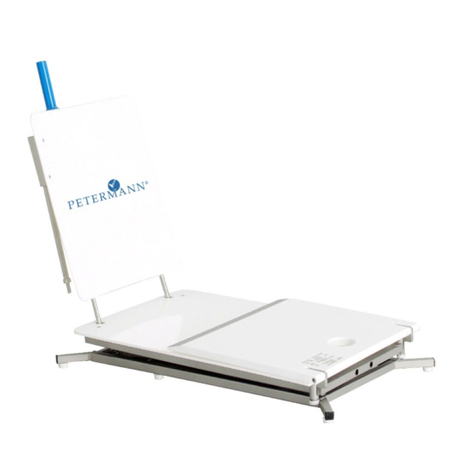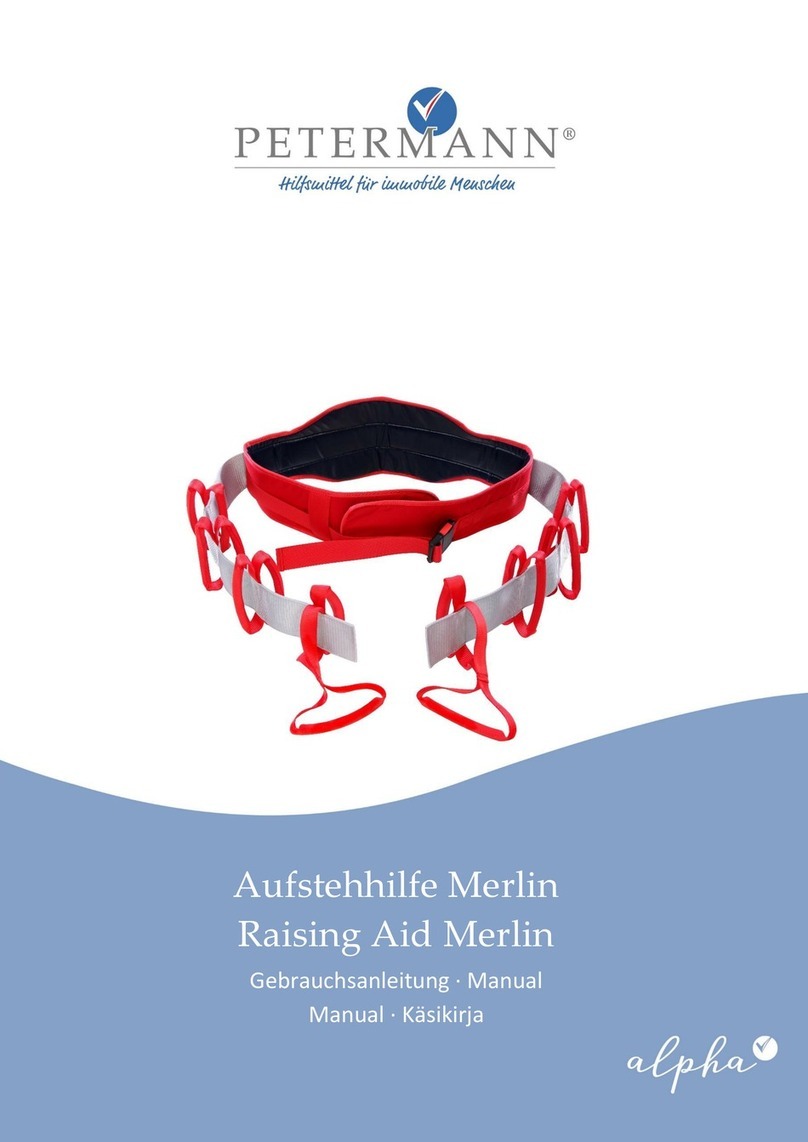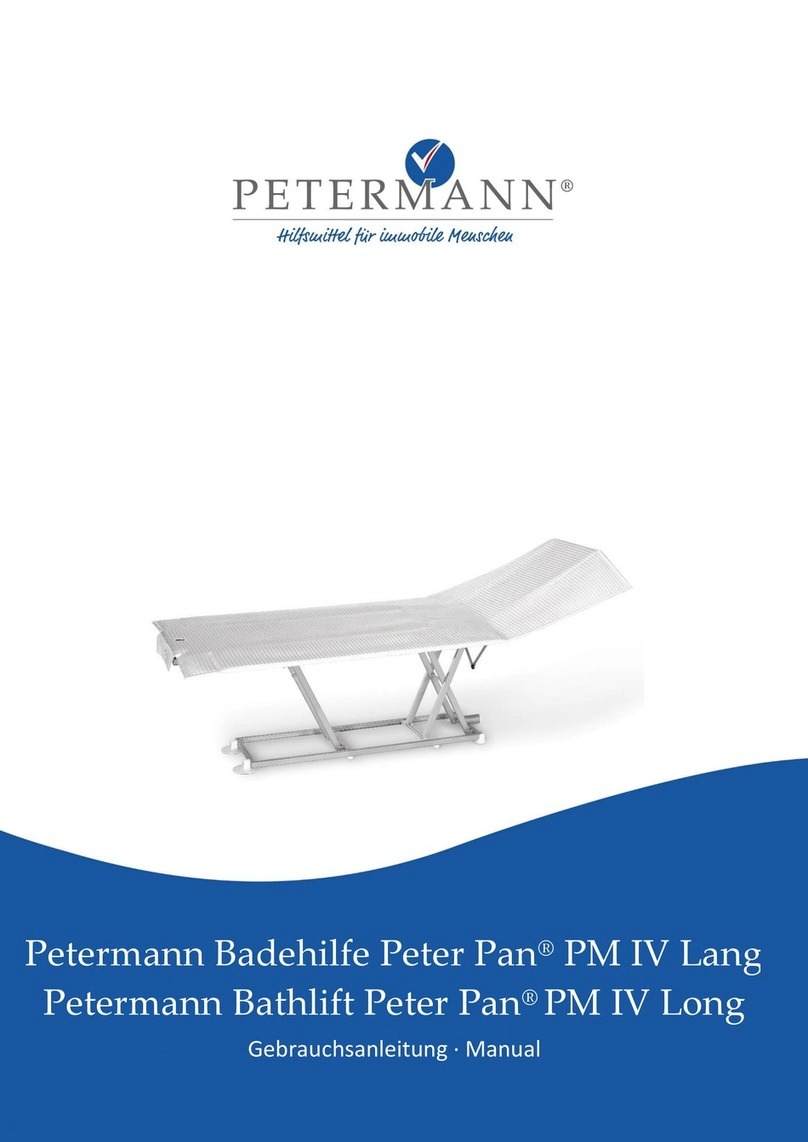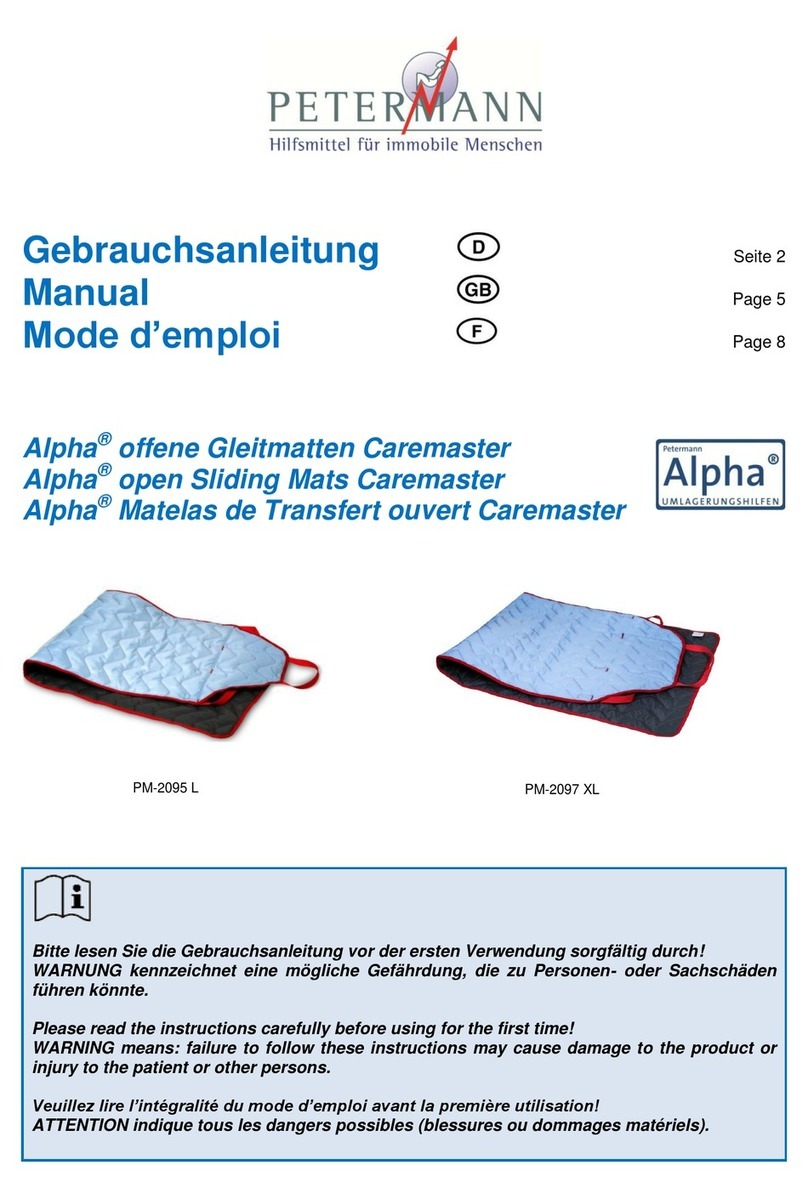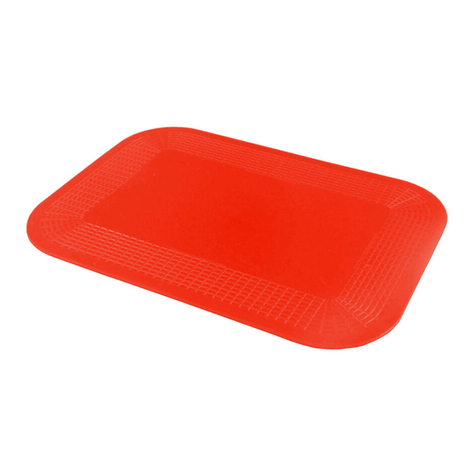
Das Rollboard lässt sich bei einem Transfer von sehr schwergewichtigen Personen von vier Pflegekräften
bedienen. Kurzfristig können Sie das Rollboard während eines Transfers auch unter Belastung anheben, um ein
Hindernis zu übergehen. Das Rollboard Vision lässt sich jederzeit aus einer ungünstigen Transfersituation nach
oben oder unten ziehen, bewegen oder kurzfristig anheben. Denken Sie immer an rückengerechtes Arbeiten in
der Pflege.
3. Reinigung, Pflege und Desinfektion
Alle Alpha®Umlagerungs- und Transferhilfen können feucht gereinigt werden. Verwenden Sie warmes Wasser
und ein mildes Reinigungsmittel. Wischen Sie das Produkt ggf. mit einem feuchten Tuch ab und lassen Sie es
anschließend gut trocknen. Verwenden Sie zum Reinigen keine scheuernden oder bleichenden Mittel und keine
scharfkantigen Gegenstände.
Wenn erforderlich, empfehlen wir eine Wischdesinfektion z.B. mit dem Produkt Trionic®(DGHM/VAH Zulassung,
weitere Informationen auf Anfrage).
Beachten Sie unbedingt den Pflegehinweis am Etikett jedes Produktes so wie die Angaben auf der jeweiligen
Gebrauchsanleitung.
3.1 Bezug
Das Cover des Rollboards (Überzug) kann bei 60° C in der Maschine gewaschen werden und ist für niedrige
Trocknertemperaturen (45 – 50°C) geeignet. Verwenden Sie Feinwaschmittel!
Bei Verwendung von Bleichmitteln, Alkohol oder Weichspüler können sich die Funktionseigenschaften des
Bezuges nachhaltig verschlechtern. Grundsätzlich sind textile Materialien und ähnliche Oberflächen nicht für
alkoholische und/oder Aldehyd haltige Desinfektionsmittel geeignet. Nicht autoklavieren!
3.2 Board
Das Board selbst ist sehr widerstandsfähig und kann mit normalen Haushaltsreinigern gereinigt werden (siehe
oben im Punkt 3.). Das Board kann mit Desinfektionslösung auf Alkoholbasis sowie mit Trionic®(DGHM/VAH
Zulassung, weitere Informationen auf Anfrage) problemlos desinfiziert werden. Dann unbedingt gut trocknen
lassen. Eine detaillierte Auswertung der chemischen Widerstandsfähigkeit des Boards erhalten Sie gerne auf
Anfrage. Das Board eignet sich aufgrund der thermoempfindlichen Struktur des Materials nicht gut für die
Verwendung im Autoklaven.
4. Garantie
•Die Firma Petermann garantiert, dass das Produkt frei von Material- und Verarbeitungsmängeln ist.
•Die Garantieleistung bezieht sich auf einen Zeitraum von 3 Jahren. Diese erstreckt sich nicht auf Mängel,
die auf unsachgemäßen Gebrauch zurückzuführen sind.
•Die Firma Petermann ist nicht für zufällige oder mittelbare Verletzung bzw. Sachschäden haftbar.
5. Sicht- und Funktionskontrolle / Sicherheitshinweise
Auch Umlagerungsprodukte unterliegen einem natürlichen Alterungsprozess. Überprüfen Sie das Produkt
regelmäßig und sorgfältig. Stellen Sie sicher, dass das Produkt in einem einwandfreien Zustand ist und das
Material, die Zugschlaufen und die Nähte nicht beschädigt sind. Überprüfen Sie die Funktion des Produkts, indem
Sie Druck bzw. Belastung auf die Griffe ausüben und stellen Sie sicher, dass das Material der Belastung
standhält. Prüfen Sie die Stabilität, indem Sie vorsichtig das Brett biegen und sicherstellen, dass es elastisch ist,
aber dennoch fest und stabil. Das spezielle Gleitmaterial ermöglicht durch seine glatte Oberfläche ein einfaches
Gleiten und Bewegen. Überprüfen Sie diese Eigenschaften – am besten im Vergleich mit einem neuen Produkt.
WARNUNG:
•Defekte Produkte dürfen nicht mehr verwendet werden.
•Achten Sie darauf, dass der Situation angemessen, unbedingt eine ausreichende Zahl von
ausgebildeten Pflegekräften den Transfer sichert.
•Lassen Sie den Patienten nie unbeaufsichtigt auf dem Rollboard.
•Die glatte Oberfläche minimiert den Reibungswiderstand während des Positionswechsels erheblich.
Überprüfen Sie sorgfältig beide Transferebenen auf bremssichere Standfestigkeit (Rollstuhl, Bett).
•Achten Sie darauf, besonders beim Anheben des Rollboards, dass der Patient sicher auf dem
Rollboard liegt und nicht herabgleiten kann.
•Achten Sie darauf, dass die Transfers rückengerecht von den Pflegekräften ausgeführt werden.






